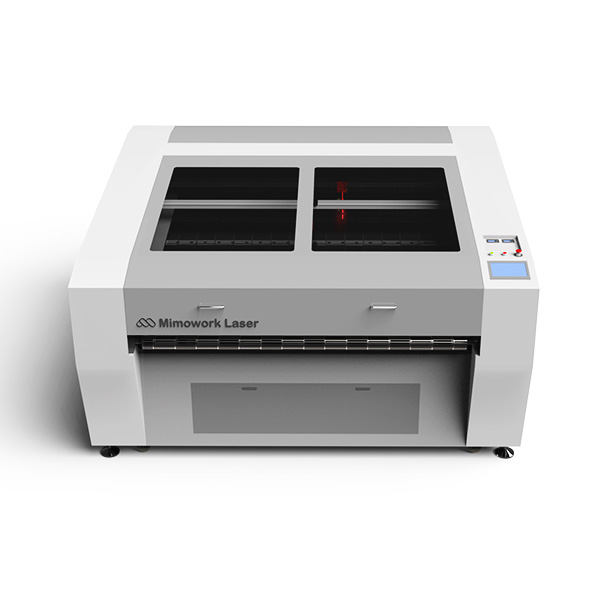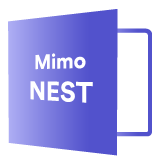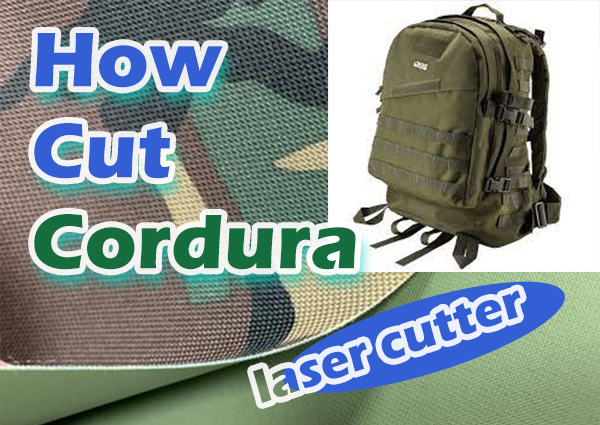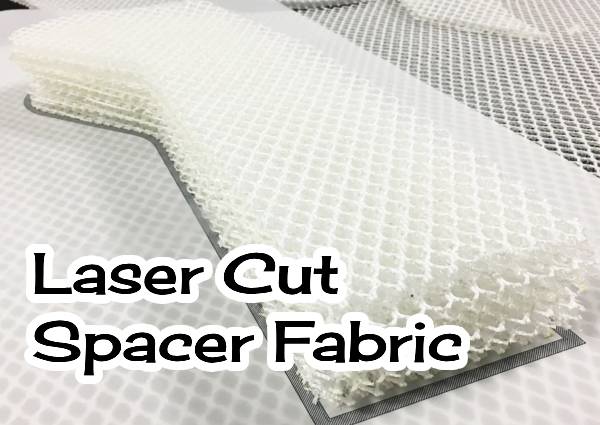Yes, you can absolutely laser cut fiberglass using a professional CO2 laser cutting machine!
While fiberglass is tough and durable, the laser packs a punch with its concentrated energy, effortlessly slicing through the material.
The thin yet powerful beam zips through fiberglass cloth, sheets, or panels, leaving you with clean, precise cuts every time.
Laser cutting fiberglass is not only efficient but also a fantastic way to bring your creative designs and complex shapes to life with this versatile material. You’ll be amazed at what you can create!
Tell about Fiberglass
Fiberglass, often called glass-reinforced plastic (GRP), is a fascinating composite made up of fine glass fibers woven into a resin matrix.
This clever mix gives you a material that’s not only lightweight but also incredibly strong and versatile.
You’ll find fiberglass in all sorts of industries—it's used for everything from structural components and insulation to protective gear in fields like aerospace, automotive, construction, and marine.
When it comes to cutting and processing fiberglass, using the right tools and safety precautions is key to getting the job done safely and accurately.
Laser cutting truly shines here, enabling you to achieve those clean, intricate cuts that make all the difference!
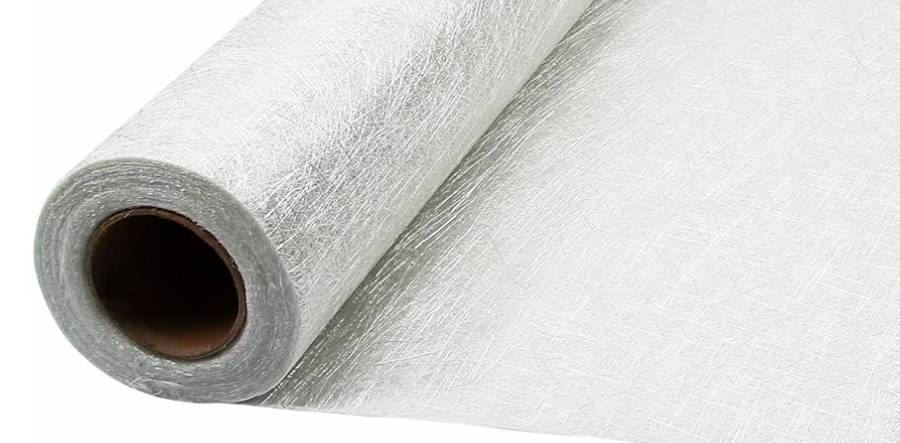
Laser Cutting Fiberglass
Laser cutting fiberglass is all about using a high-powered laser beam to melt, burn, or vaporize the material along a specific path.
What makes this process so precise is the computer-aided design (CAD) software that controls the laser cutter, ensuring every cut is accurate and consistent.
One of the best things about laser cutting is that it works without any physical contact with the material, which means you can achieve those intricate, detailed designs effortlessly.
With its fast cutting speeds and top-notch quality, it’s no wonder that laser cutting has become a go-to method for working with fiberglass cloth, mats, and insulation materials!
Video: Laser Cutting Silicone-Coated Fiberglass
Silicone-coated fiberglass is a fantastic protective barrier against sparks, spatter, and heat, making it invaluable across various industries.
While cutting it with a knife or jaws can be quite challenging, laser cutting makes the process not only possible but also easy, delivering exceptional quality with every cut!
Unlike traditional cutting tools like jigsaws or Dremels, laser cutting machines use a non-contact method to tackle fiberglass.
This means no tool wear and no damage to the material—making laser cutting the ideal choice!
But which type of laser should you use: Fiber or CO₂?
Choosing the right laser is key to achieving the best results when cutting fiberglass.
While CO₂ lasers are often recommended, let’s explore both CO₂ and fiber lasers to see their advantages and limitations for this task.
CO2 Laser Cutting Fiberglass
Wavelength:
CO₂ lasers typically operate at a wavelength of 10.6 micrometers, which is highly effective for cutting non-metallic materials, including fiberglass.
Effectiveness:
The wavelength of CO₂ lasers is well-absorbed by the fiberglass material, allowing for efficient cutting.
CO₂ lasers provide clean, precise cuts and can handle various thicknesses of fiberglass.
Advantages:
1. High precision and clean edges.
2. Suitable for cutting thicker sheets of fiberglass.
3. Well-established and widely used in industrial applications.
Limitations:
1. Requires more maintenance compared to fiber lasers.
2. Generally larger and more expensive.
Fiber Laser Cutting Fiberglass
Wavelength:
Fiber lasers operate at a wavelength of around 1.06 micrometers, which is more suitable for cutting metals and less effective for non-metals like fiberglass.
Feasibility:
While fiber lasers can cut some types of fiberglass, they are generally less effective than CO₂ lasers.
The absorption of the fiber laser's wavelength by fiberglass is lower, leading to less efficient cutting.
Cutting Effect:
Fiber lasers might not provide as clean and precise cuts on fiberglass as CO₂ lasers.
The edges may be rougher, and there could be issues with incomplete cuts, especially with thicker materials.
Advantages:
1. High power density and cutting speed for metals.
2. Lower maintenance and operational costs.
3.Compact and efficient.
Limitations:
1. Less effective for non-metallic materials like fiberglass.
2. May not achieve the desired cutting quality for fiberglass applications.
How to Choose Laser for Cutting Fiberglass?
While fiber lasers are highly effective for cutting metals and offer several advantages
They are generally not the best choice for cutting fiberglass due to their wavelength and the material's absorption characteristics.
CO₂ lasers, with their longer wavelength, are more suitable for cutting fiberglass, providing cleaner and more precise cuts.
If you are looking to cut fiberglass efficiently and with high quality, a CO₂ laser is the recommended option.
You will get from CO2 Laser Cutting Fiberglass:
✦ Better Absorption: The wavelength of CO₂ lasers is better absorbed by fiberglass, leading to more efficient and cleaner cuts.
✦ Material Compatibility: CO₂ lasers are specifically designed to cut non-metallic materials, making them ideal for fiberglass.
✦ Versatility: CO₂ lasers can handle a variety of thicknesses and types of fiberglass, providing more flexibility in manufacturing and industrial applications. Like fiberglass insulation, marine deck.
| Working Area (W *L) | 1300mm * 900mm (51.2” * 35.4 ”) |
| Software | Offline Software |
| Laser Power | 100W/150W/300W |
| Laser Source | CO2 Glass Laser Tube or CO2 RF Metal Laser Tube |
| Mechanical Control System | Step Motor Belt Control |
| Working Table | Honey Comb Working Table or Knife Strip Working Table |
| Max Speed | 1~400mm/s |
| Acceleration Speed | 1000~4000mm/s2 |
Options: Upgrade Laser Cut Fiberglass

Auto Focus
You may need to set a certain focus distance in the software when the cutting material is not flat or with different thickness. Then the laser head will automatically go up and down, keeping the optimal focus distance to material surface.

Servo Motor
A servomotor is a closed-loop servomechanism that uses position feedback to control its motion and final position.

Ball Screw
In contrast to conventional lead screws, ball screws tend to be rather bulky, due to the need to have a mechanism to re-circulate the balls. The ball screw ensures high speed and high precision laser cutting.
| Working Area (W * L) | 1600mm * 1000mm (62.9” * 39.3 ”) |
| Software | Offline Software |
| Laser Power | 100W/150W/300W |
| Laser Source | CO2 Glass Laser Tube or CO2 RF Metal Laser Tube |
| Mechanical Control System | Belt Transmission & Step Motor Drive |
| Working Table | Honey Comb Working Table / Knife Strip Working Table / Conveyor Working Table |
| Max Speed | 1~400mm/s |
| Acceleration Speed | 1000~4000mm/s2 |
Options: Upgrade Laser Cutting Fiberglass
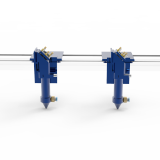
Dual Laser Heads
In the simplest and most economic way to speed up your production efficiency is to mount multiple laser heads on the same gantry and cut the same pattern simultaneously. This doesn't take extra space or labor.
When you are trying to cut a whole lot of different designs and want to save material to the largest degree, the Nesting Software will be a good choice for you.
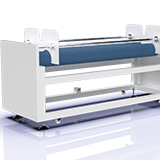
The Auto Feeder combined with the Conveyor Table is the ideal solution for series and mass production. It transports the flexible material (fabric most of the time) from the roll to the cutting process on the laser system.
How Thick of Fiberglass Can Laser Cut?
In general, a CO₂ laser can cut through thick fiberglass panels up to 25mm to 30mm.
With a range of laser powers from 60W to 600W, higher wattage means greater cutting capability for thicker materials.
But it’s not just about thickness; the type of fiberglass material also plays a crucial role. Different compositions, characteristics, and gram weights can significantly affect laser cutting performance and quality.
That’s why it’s essential to test your material with a professional laser cutting machine. Our laser experts will analyze the specific features of your fiberglass and help you find the perfect machine configuration and optimal cutting parameters!
Can Laser Cut G10 Fiberglass?
G10 fiberglass is a robust high-pressure laminate made by stacking layers of glass cloth soaked in epoxy resin and compressing them under high pressure. The outcome is a dense, strong material known for its excellent mechanical and electrical insulating properties.
When it comes to cutting G10 fiberglass, CO₂ lasers are your best bet, delivering clean, precise cuts every time.
Thanks to its impressive characteristics, G10 fiberglass is perfect for a variety of applications, ranging from electrical insulation to custom high-performance parts.
Important Note: Laser cutting G10 fiberglass can release toxic fumes and fine dust, so it’s essential to choose a professional laser cutter with a well-designed ventilation and filtration system.
Always prioritize proper safety measures, including effective ventilation and heat management, to ensure high-quality results and a safe working environment when cutting G10 fiberglass!
Any Questions about Laser Cutting Fiberglass
Talk with Our Laser Expert!
Any Questions about Laser Cutting Fiberglass Sheet?
Post time: Mar-25-2025



